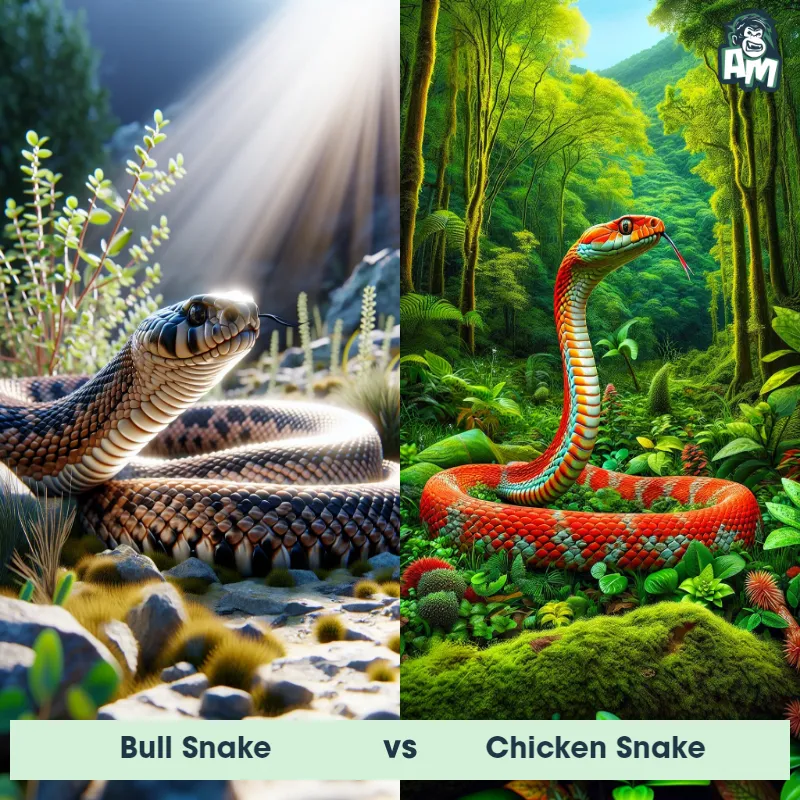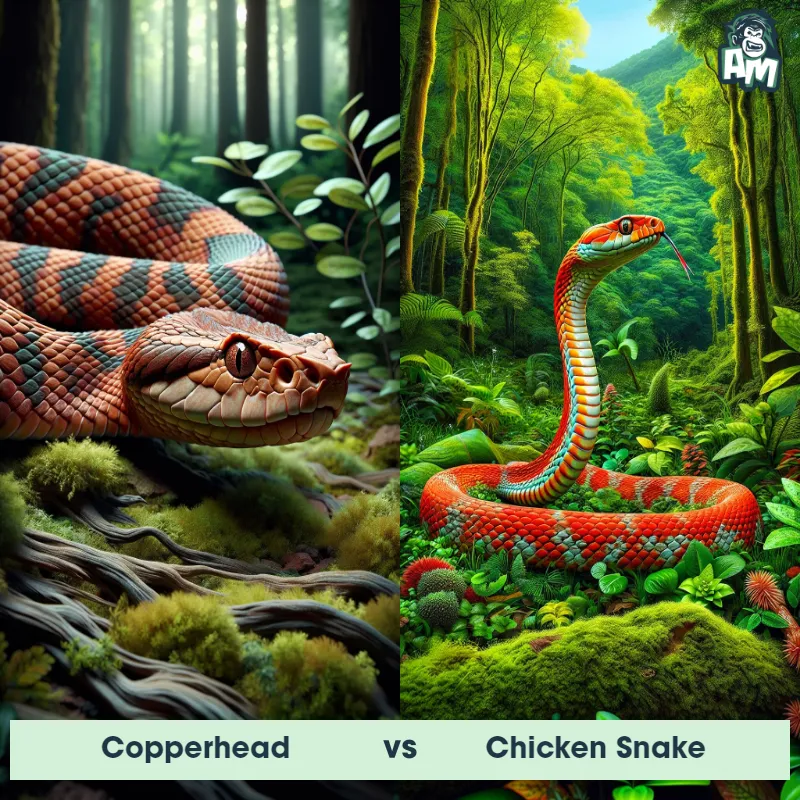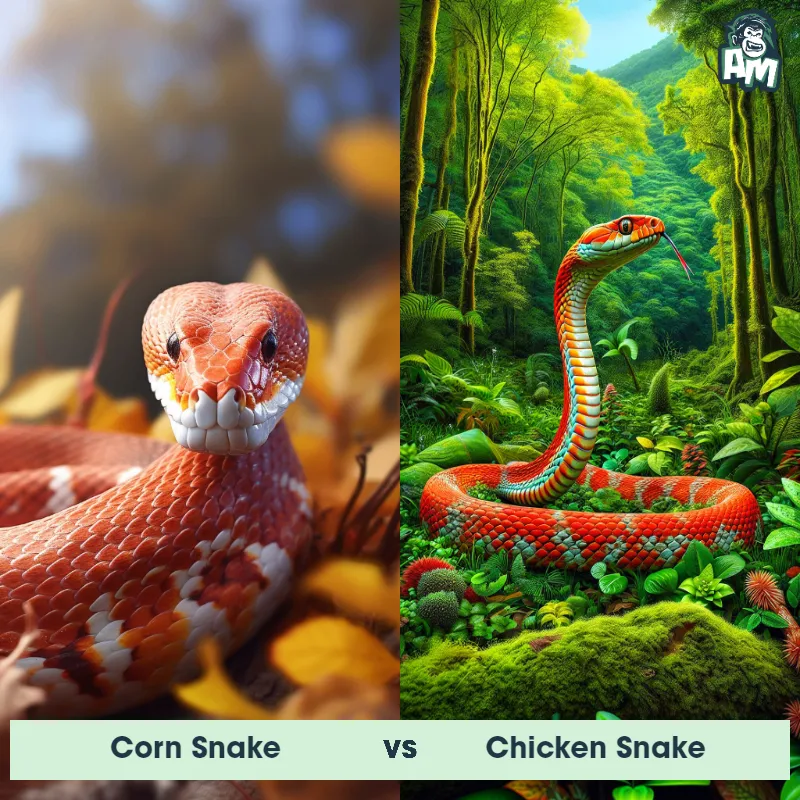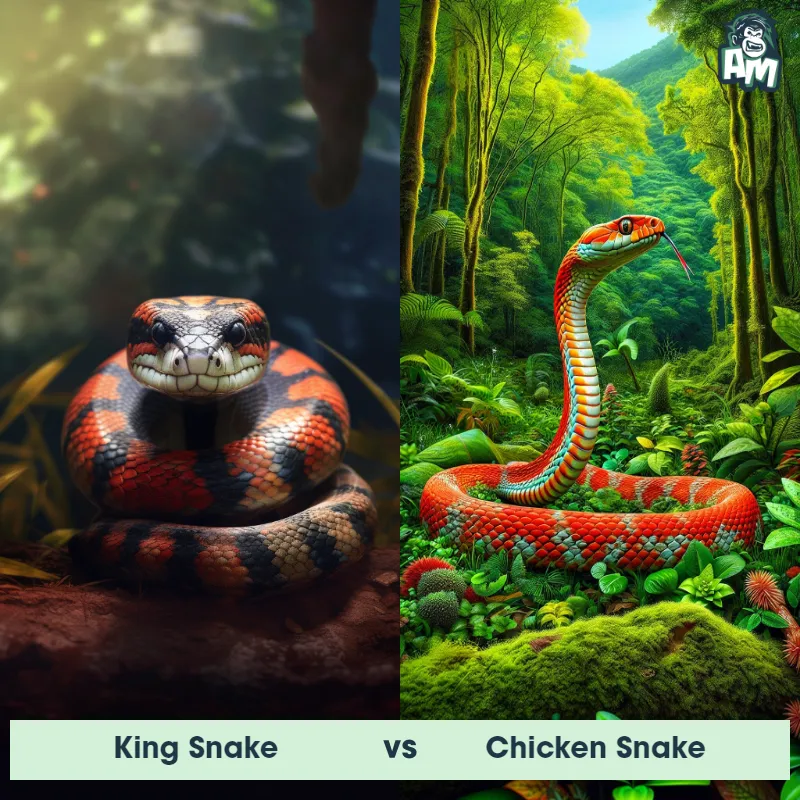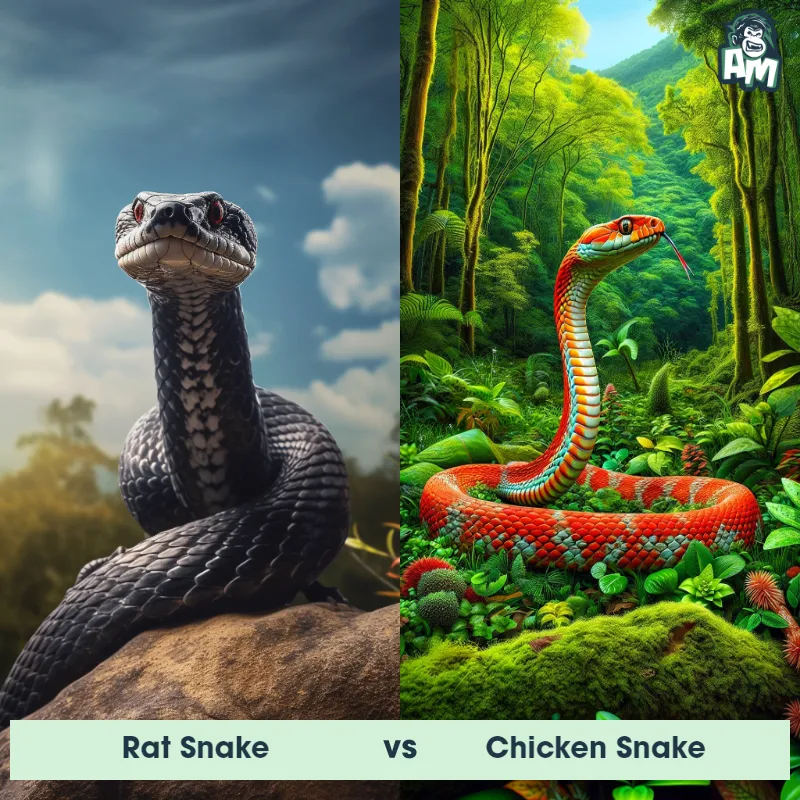The Chicken Snake
The Chicken Snake, also known as the Eastern Rat Snake, is a non-venomous reptile found in North America. It can grow up to 6 feet in length and has a slender, cylindrical body covered in smooth brown or black scales. This snake is characterized by its bright yellow belly, which helps to distinguish it from other snake species. Chicken Snakes are excellent climbers and are known for their ability to scale tall trees and even buildings. They are constrictor snakes, meaning they subdue their prey by wrapping their bodies around them and squeezing until they cannot breathe.

| Chicken Snake | |
|---|---|
| Size | Up to 6 feet (1.8 meters) |
| Weight | Up to 3 pounds (1.4 kilograms) |
| Speed | 8-12mph (13-19km/h) |
| Key Strength | Agility and climbing skills |
| Biggest Weakness | Lack of venom |
| Scientific Name | Pantherophis alleghaniensis |
| Family | Colubridae |
| Habitat | Forests, woodlands, and fields |
| Geography | North America |
| Diet | Small mammals and birds |
| Lifespan | 5 years - 10 years |

The Chicken Snake
The Chicken Snake, also known as the Eastern Rat Snake, is a non-venomous reptile found in North America. It can grow up to 6 feet in length and has a slender, cylindrical body covered in smooth brown or black scales. This snake is characterized by its bright yellow belly, which helps to distinguish it from other snake species. Chicken Snakes are excellent climbers and are known for their ability to scale tall trees and even buildings. They are constrictor snakes, meaning they subdue their prey by wrapping their bodies around them and squeezing until they cannot breathe.
![[object Object] Gif](https://tenor.com/view/viralhog-egg-snake-hungry-gimme-that-gif-12840403.gif)
Fun Fact: The Chicken Snake is known for its adaptability and can thrive in various habitats, including forests, fields, and even suburban areas, which has earned it the nickname "the ultimate survivor."
| Chicken Snake | |
|---|---|
| Size | Up to 6 feet (1.8 meters) |
| Weight | Up to 3 pounds (1.4 kilograms) |
| Speed | 8-12mph (13-19km/h) |
| Key Strength | Agility and climbing skills |
| Biggest Weakness | Lack of venom |
| Scientific Name | Pantherophis alleghaniensis |
| Family | Colubridae |
| Habitat | Forests, woodlands, and fields |
| Geography | North America |
| Diet | Small mammals and birds |
| Lifespan | 5 years - 10 years |
Chicken Snake Matchups
We use AI to simulate matchups between the Chicken Snake and other animals. Our simulation considers size, strength, and natural predatory behaviors to determine the most likely outcome.
Chicken Snake: Diet, Predators, Aggression, and Defensive Behaviors
What do Chicken Snakes eat?
Chicken Snakes are non-venomous constrictors that primarily feed on small rodents, birds, eggs, and insects. They are known for their appetite for poultry, hence the name "Chicken Snake."
Do Chicken Snakes have any predators?
As adults, Chicken Snakes have few natural predators due to their size and ability to defend themselves with their powerful muscles. However, young Chicken Snakes may fall victim to larger predators such as birds of prey, mammals, and other snakes.
Are Chicken Snakes aggressive?
Chicken Snakes are generally docile and non-aggressive towards humans. They prefer to avoid confrontation and will usually retreat if they feel threatened. However, they may strike if cornered or handled improperly.
Do Chicken Snakes fight with other snakes?
Chicken Snakes are not known to be territorial or engage in fights with other snakes. They are solitary creatures that focus on hunting for food rather than competing with other snakes for resources.
How do Chicken Snakes defend themselves?
When threatened, Chicken Snakes may hiss, vibrate their tail, and strike as a defense mechanism. They rely on their camouflage and mimicry to blend into their surroundings and avoid detection by predators. Additionally, their ability to climb trees and swim helps them escape from danger.
What is the biggest weakness of a Chicken Snake in a fight?
The biggest weakness of a Chicken Snake in a fight is their lack of venomous bite. While they are constrictors and can overpower their prey with their strength, they do not possess venom to incapacitate their opponents quickly. This makes them vulnerable to predators with venomous bites.
Fun Fact: Despite its name, the Chicken Snake doesn't actually prey on chickens; however, it is an efficient rodent catcher, helping to control populations of rats and mice, making it a beneficial species for farmers.
Fun Fact: When threatened, the Chicken Snake has a unique defensive behavior called "mimicry," where it flattens its head, shakes its tail, and hisses loudly, imitating the appearance and behavior of venomous snakes to deter potential predators.



